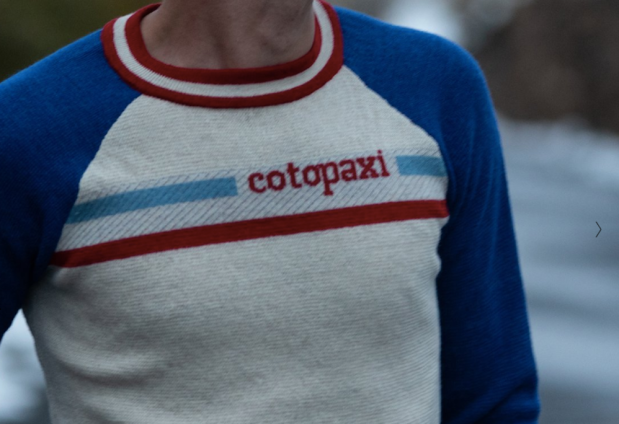Cotopaxi And Selling Outdoor Gear For The Greater Good

When Cotopaxi Founder Davis Smith began shopping his idea for an outdoor gear company with a focus on giving back — particularly to people in need — investors didn’t get it. Unlike what he described as “the 1980s model of corporate social responsibility,” which mostly involved donating some money to charitable causes a few times a year, Smith had a much broader vision.
In his own words, Smith wanted to “re-imagine product, design and supply chain philanthropy” as well as “structural” corporate social impact.
It was a vision that got a “no” response far more often in early days than a “yes.” Though outdoor gear firms — think North Face or Patagonia — have a long track record of philanthropic giving, most of the focus is on environmental conservation and protection. In the early days, many investors didn’t think the more human focus of Cotopaxi would have quite the same impact and appeal for consumers who purchase high-end outdoor gear.
But Smith was committed, and believed that among outdoor enthusiasts — particularly millennials like himself — a digitally-native brand with a story to tell and a unique way of pursuing its core mission would have an awful lot of appeal.
“My co-founders and I ultimately realized that there was a need for a digitally-native brand in the outdoor space that told a story, could connect with what millennials wanted, and make technologically advanced gear and apparel that made a difference,” Smith said in an interview with Forbes last year.
Eventually, Smith and his co-founders started finding traction with the concept — meaning they began to hear yes instead of no — and Cotopaxi launched in April 2014 with $3 million in seed funding. Its first offerings for consumers were backpacks. Six month later, the firm added outdoor apparel to go with them.
And while Smith says Cotopaxi’s gear quality is high — and technically on point — that alone isn’t enough for an emerging brand. The best technical performance or the “best backpack” isn’t enough, according to Smith, particularly when millennial customers are your target audience.
“You have to go deeper, and make a human connection that’s meaningful,” he noted.
In early days, that human connection was made with a llama — and an experiment in experiential retail called Questival.
The llama was bought off of Craigslist. And if it seems an odd choice of an investment for a startup, it is worth noting llama wool is a primary insulator on a number of Cotopaxi coats. And a llama is an excellent way to get attention — particularly for a young startup with limited funds for marketing.
And the Craisglist llama — after being packed up and brought on a nationwide tour of college campuses — did a stellar job promoting both the brand and its second signature innovation, Questival — a 24-hour adventure race that sets teams of two to six off on adventures throughout a variety of American cities, and requires various community service stops along the way.
Questival attracted 4,000 people in its first year and trended on Twitter, and as of this year it was in over 50 American cities.
With its supply chain, Cotopaxi is also dedicated to working toward the benefit of its suppliers. The company’s Del Dia line is manufactured in the Philippines by workers who are offered fair wages and hours, and given the opportunity to participate in the design process. The brand also partners with high Bolivian desert llama farmers to create pathways to market for rural small-holder farmers who would otherwise make less than $100 a year.
“The people we work with love feeling that they’re involved in creating something that becomes a personal piece of art,” Smith said. “If you start thinking about people throughout your entire product process as a core value these are the little things that emerge that can change your company’s entire approach to design and development.”
Cotopaxi is not quite the household name that Patagonia is at this point, but its “gear for the good” philosophy has clearly found an audience — and one that seems to be growing at that. Because, as Smith noted, consumers want to feel good about not just what a purchase can do for them, but who else they can help with their purchases.
